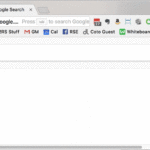Verify: Investigation slams government ID scheme
 Image copyright
Image copyright
Creative Commons/Annelieke B
The government will stop funding Verify next year
The National Audit Office (NAO) has slammed the government’s flagship identity verification scheme.
A damning report says Gov.UK Verify has fallen well short of its target of 25 million users by 2020, managing only 3.6 million so far.
The government has had to lower its estimates for Verify’s financial benefits by 75%.
It says challenges like these are to be expected when the government is working “at the forefront of new technology”.
The Verify platform was launched by the Government Digital Service (GDS) in 2016, intended to become the default way for people to prove their identity for online government services.
From checking income tax to receiving benefit payments, GDS’s aim was for Verify to be a shared identity portal across government departments – with 46 expected to be connected to the platform by March 2018.
But only 19 government services currently use Verify and 11 of those can still be accessed using other online systems.
For those that do use Verify, problems are widespread.
Currently only 48% of people who try to sign up for the service are successful on their first try.
This rate is even lower (38%) for universal credit claimants using the service to authenticate their identity online.
This has led to increased operational costs, with the Department for Work and Pensions (DWP) expecting its spend on manual verification to be about £40m over the next decade.
“Verify is saving taxpayers money and is a world-leading project in its field,” a GDS spokesman told BBC News.
“The NAO report reflects that it has been a challenging project – but challenges like these are to be expected when the government is working at the forefront of new technology.”
“Management failure”
But Meg Hillier MP, who chairs the Public Accounts Committee, called Verify “a textbook case of government’s over-optimism and programme-management failure.”
“Despite spending at least £154m on Verify, only half the people that try to sign up are able to use it and take-up is much lower than expected.”
The report notes that the total cost of Verify is in fact likely to exceed £154m, as this figure does not include the amount it has cost departments to reconfigure their systems to use Verify.
Of the known costs, more than one-third has gone on payments to the commercial identity providers behind the system, including Barclays and the Post Office.
In addition, six government departments have yet to pay for the services – totalling £2m in unpaid invoices between them.
Image copyright
gov.uk
Fewer than half of people that try to sign up for the service are successful on their first try
The government is due to stop funding Verify from April 2020, handing operation over to the private sector.
“It is not yet clear what it will cost for government departments to continue using Verify when government funding stops next year,” said Ms Hillier.
All these setbacks mean the estimate for Verify’s financial benefits has been slashed by the government from £873m – as GDS predicted in a 2016 business case – down to £217m.
And even this revised figure is in doubt, as the NAO says it has been unable to verify the estimated benefits.
“Even in the context of GDS’s redefined objectives for the programme, it is difficult to conclude that successive decisions to continue with Verify have been sufficiently justified,” the report says.
Analysis: Rory Cellan-Jones, BBC technology correspondent
A whole new way of doing major government IT programmes much more efficiently – that was the promise of GDS.
Instead, its biggest project, Verify, has turned out to be the same old story of delays, technical failures and missed targets – or, as the NAO puts it, the “optimism bias and a failure to set clear objectives” we’ve seen so many times before.
I got a warning of that back in 2014 when I was invited in to the Cabinet Office to be one of the first people to try out Verify.
The GDS team painted a compelling vision of a system that would give citizens a simple way of accessing online services provided by an increasingly digital government.
But despite their best efforts, when they tried to verify me, the computer said, “No.”
Teething troubles that will soon be sorted out, I thought.
But, five years on, fewer than half of the people who try to sign up succeed even after they’ve had their identity confirmed by one of Verify’s commercial partners.
Many of the big government departments were hostile to GDS from the start, seeing it as a threat to their right to run their own IT projects.
Perhaps that’s one of the reasons why just 19 departments have signed up to use it, when 46 were supposed to have come on board by now.
The most startling fact in the report is that six government bodies that are using Verify have failed to pay their bills for it, even after being invoiced by the Cabinet Office.
The government will end central funding for Verify next year and it is clear it has only been kept afloat for so long because of the role it was supposed to play in the provision of universal credit.
Another fine mess then – and as far as finding a way to run major public sector IT projects, it is back to the drawing board.



